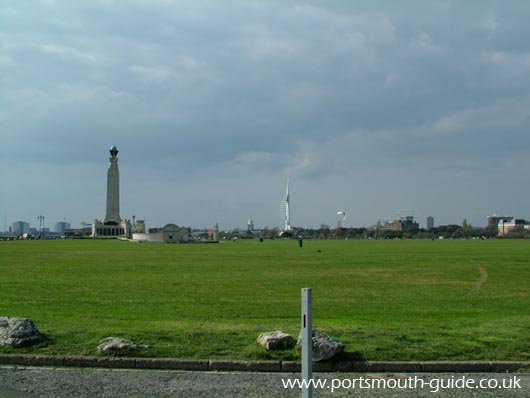


|
Portsmouth hosts many special events of which Southsea common is used for many of them. Southsea common is located on the south coast of Portsmouth. Southsea common is used for many events many of which are military and in more recent times has been used for celebrations and commemorations. It was used for the D-Day 50 commemorations held on 5th June 1994, which were held to commemorate the 50th anniversary of d-day. The events were attended by the British Royal family and twelve other heads of state including the President of the United States. The commemorations included a Drum Head Service followed by a fleet review. Then the heads of state reviewed the fleet before heading to Normandy. On 28th June 2005 just over ten years later Portsmouth again provided a thoroughly entertaining event. Portsmouth helped celebrate Trafalgar 200 by the Queen reviewing the international fleet in the Solent followed by a breathtaking Son Et Lumiere and battle re-enactment in the evening, which culminated in the largest firework display seen in the UK. Southsea common was an integral part of these events. Southsea common was initially a military area and was used for assembling armies before battles. The War Memorial is identical to those in Chatham and Plymouth. The military use of Southsea Common continued until 1922, when Portsmouth Corporation purchased it from the War Department. They planted the Ladies' Mile and built leisure pavilions, some of which were located on what is now the floral clock. The common also offers a skate park and bowls green. The war memorial located on Southsea common is to commemorate all those lost in action during both world wars. Part of the inscription reads “The Portsmouth Naval Memorial. This memorial commemorates officers ranks and ratings of this port who died at sea during the wars 1914 – 1918 and 1939 – 1945. Action in which they fought are recorded in the registers and on the memorial itself.” It later says “Of the 24,588 men and women whose names are on this monument 9,666 died during the First Word War and 14,922 including 75 from Newfoundland who served in the Royal Navy during the Second World War. All were buried at sea or were otherwise denied by the fortunes of war, a known and honoured grave. The war memorial in Southsea was erected as a result of an admiralty committee recommending that the three major ports those of Portsmouth, Chatham and Plymouth should each have an identical memorial of unmistakable naval form. The form used was that of an obelisk. After the second world war it was decided that the naval memorial should be extended to commemorate the naval dead without graves of both wars. Some links follow to events that were either hold on Southsea Common or close to it.
|














